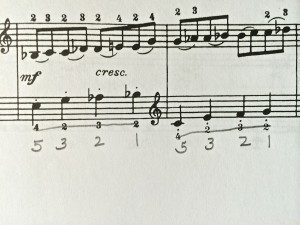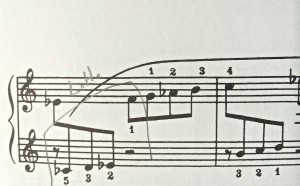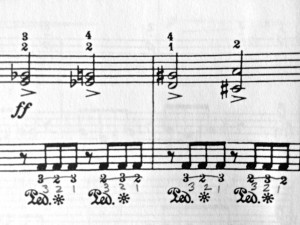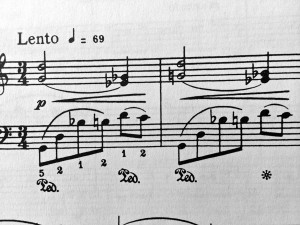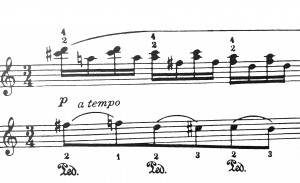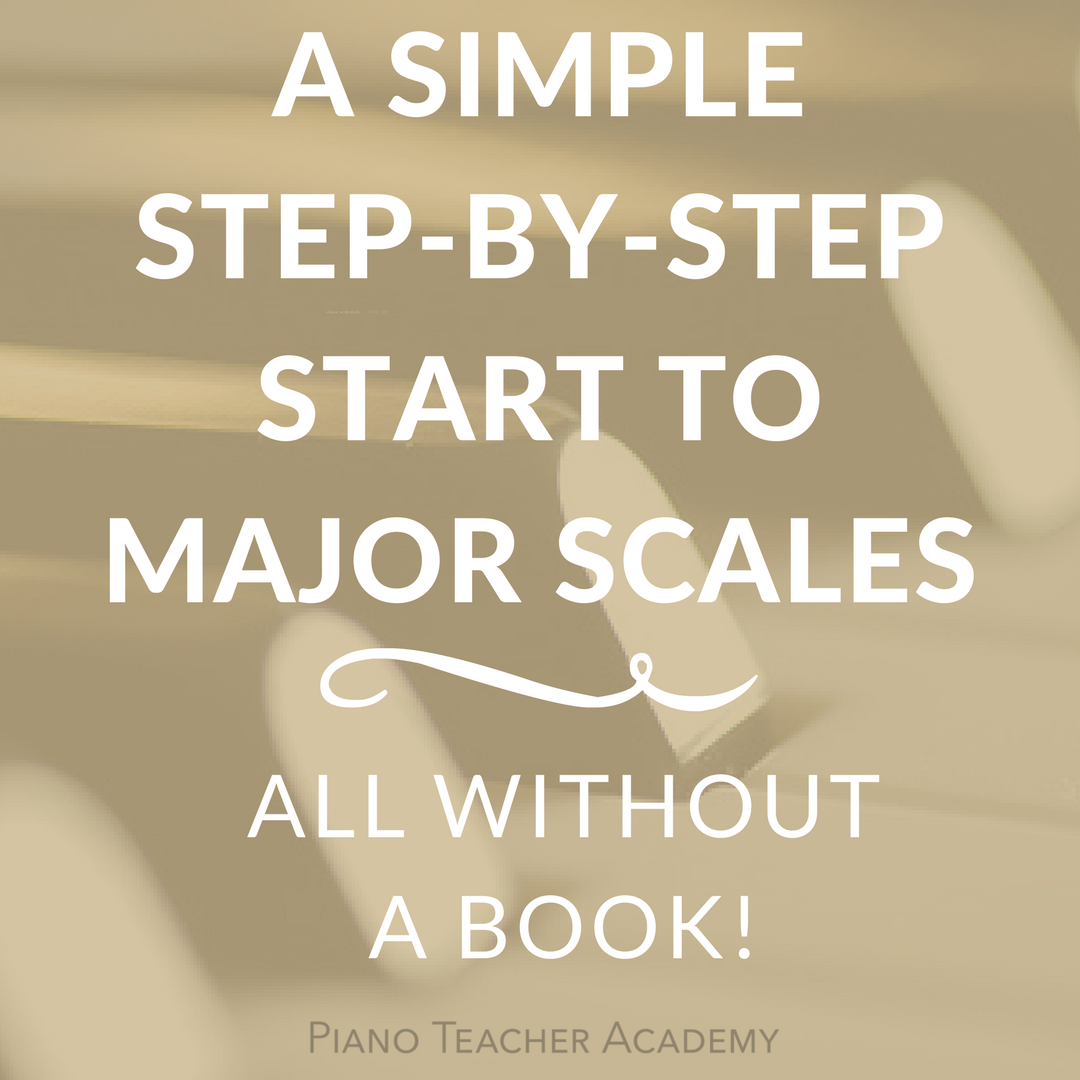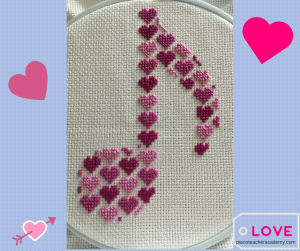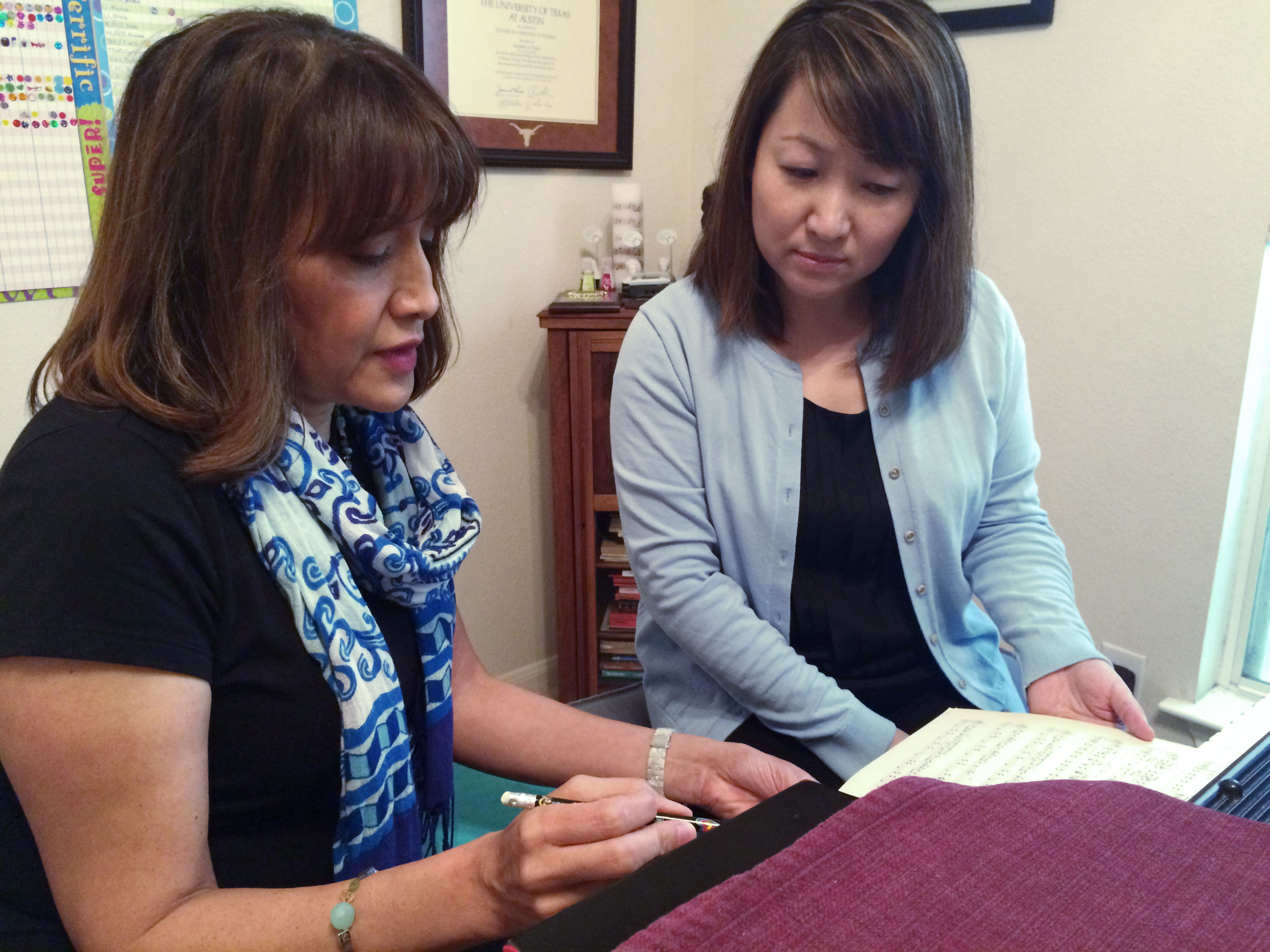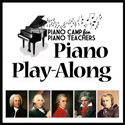Khachaturian “Adventures of Ivan” Piano Play-Along: Post Four (Nos. 5 and 6 Reaction)
Ivan’s adventures are becoming much more involved. I found myself playing Nos. 5 and 6 many times this past week and with each playing I enjoyed new discoveries in sound color, rhythm, and texture. How could anyone tire of these pieces? They’re so captivating!
Quick scan thoughts:
- No. 5 “Ivan is Very Busy” is filled with finger antics as it explores a multitude of staccato touches with repeated notes and repeated patterns, especially in the LH. It’s constantly moving without a single rest until the penultimate measure. Since it’s rapid and lightly textured, it should result in light, nimble sounds. Interesting to notice that the hands are positioned closely together throughout
- No. 6 “Ivan and Natasha” is a lush, Romantic texture especially compared to the previous movements. The LH provides a good deal of rhythmic movement to propel the phrases. Of course Khachaturian’s trademark chromaticism is evident with accidentals all over this score. It seems he couldn’t confine himself to any one key area for too long.
Thoughts while playing….
No. 5 – “Ivan is Very Busy” (also seen as “Ivan is Busy” and “Etude” in other collections)
An excellent piece for repeated staccato-note playing and alternation between the hands. I played this for a student this week to get his impression. His reaction: “I like that!” It’s easy to hear why this piece would be motivating to a young student. It’s energetic and truly adventuresome in sound, rhythm, and range.
First impressions:
- Stay alert about the accidentals. They change rapidly.
- Your LH will get a staccato workout and a quick forearm staccato would probably add a lighter effect than just a finger staccato. Here’s a demo of the idea:
https://www.youtube.com/watch?v=3mrt90agWXQ&index=2&list=UU2Awk8myQ8pMHbnnbeQCr6g
Fingering: Measures18 & 19 – I found Mirovitch’s LH 4-2-3-2 pattern difficult to coordinate with the RH, so see my suggestion below. It was much easier to process when playing both hands together at the fast tempo.
And this re-distribution for the top of p. 3 was also much easier to grab onto:
For the repeated notes in the LH of m. 39, I preferred the standard 3-2-1 repetition. It felt lighter and it naturally sorted itself out in the latter measures as well.
Pedaling: I would keep it light and dry where indicated, except for the C Major build-up at the end.
Such an invigorating piece! Here’s a sample YouTube video. There were several. but I had difficulty locating one where a performer truly played staccato in the LH.
https://www.youtube.com/watch?v=m-umb1QU7go
No. 6 – “Ivan and Natasha”
Words that came to mind as I played: dreamy, exotic, luscious, mysterious….. And just who is this Natasha? Sister, friend, girlfriend? This piece should be better known. It would be excellent preparation for Impressionistic repertoire. So much of the harmonic color and texture reminded me of Debussy.
How many times do you see a falling augmented 5th like this one as the basis of a melody (soprano line)? Khachaturian makes it sound like a good fit.
Khachaturian creates many beautifully-exotic harmonies in such a short piece and his use of chromaticism quite naturally provides the push-and-pull for the phrasing and climaxes. Both hands are filled with melodic figuration. I especially enjoyed this exquisite subito P color change after the climax in m. 17.
At this moment (top of second page), the harmonies descend quietly and melt into the return of the main theme in m. 22 (lovely!). I often have students block the harmonies in sections like this one in order to hear how the harmonic progression guides the phrase to its destination. Here’s an example in this video.
https://www.youtube.com/watch?v=vsi7h9ZjCtc
This piece will stretch a student’s expressive capabilities! A well-crafted gem! Here’s a sensitive performance I discovered on YouTube.
https://www.youtube.com/watch?v=FO5VAKraDYg
Have you heard Nos. 5 or 6 before? Taught them previously? I would love to know about students’ reactions. I’m keeping “Ivan and Natasha” on file for future use with late intermediate students.
